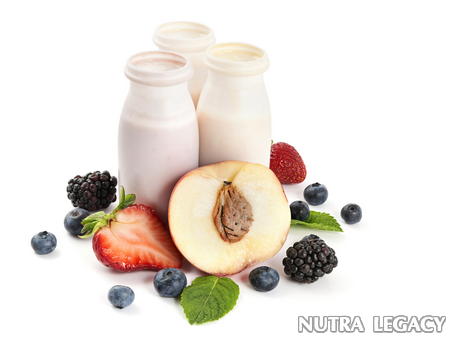What Are Probiotics and Prebiotics?

- Probiotics are living microorganisms that provide health benefits to their hosts. Prebiotics are non-digestible compounds found in the foods we eat naturally.
- However, prebiotics can be added to almost any type of food or beverage quite easily. Since these compounds are not alive as the probiotics are, they are much easier to use as an additive.
If you’ve been listening to commercials or reading health articles on the Internet, there’s a good chance you’ve heard the terms probiotics and prebiotics before. That’s because they are part of a growing trend in the nutritional industry and are considered the next big wave in what’s supposed to be good for you. Since you’ll be hearing a great deal more about probiotics and prebiotics in the coming months and years, now is a good time to become more familiar with them.
What are Probiotics?
Probiotics have been defined by the World Health Organization as living microorganisms that provide health benefits to their hosts. Most are very similar to organisms we currently have inside our bodies right now. For example, we have good bacteria inside our digestive tract that helps keep us healthy. Probiotics help in much the same way as they would.
Evidence is still being collected on the effectiveness of probiotics but initial findings have shown promising treatment benefits for many conditions, including irritable bowel syndrome, vaginal yeast infections, and even childhood eczema. While many foods in the Asian market have already begun to be enhanced with probiotics, this is just now beginning in the United States. The most high profile examples are some of the yogurt brands which have incorporated probiotic bacteria strains, such as the Bifidobacteria.
A growing part of the probiotic culture is the combining of these living microorganisms with prebiotics to create what are known as synbiotics. The idea is that these different compounds complement each other and increase the impact of their respective health benefits.
What are Prebiotics?
Beyond probiotics are prebiotics which are non-digestible compounds found in the foods we eat naturally. These prebiotics are believed to stimulate the activity of the probiotics just as they would help increase the effectiveness of the naturally growing bacteria living in our bodies. One of the most common prebiotics identified so far has been a type of starch which has been found in low amounts in many of the foods we normally eat, including onions, bananas, and asparagus.
However, prebiotics can be added to almost any type of food or beverage quite easily. Since these compounds are not alive as the probiotics are, they are much easier to use as an additive. In fact, England already has a wide array of prebiotic-enhanced products on the market, including cereals, waters, breads, and more.
While some of these products have relatively low levels of prebiotics, the good news is that it may not take much to help them do their job. Just five grams of prebiotics are needed to make the popular Bifidobacteria work effectively.
Who Should Be Taking Them?
At this point, more needs to be learned about probiotics and prebiotics before concrete health recommendations can be made. You may not want to go out of your way to add supplements and enhanced foods to your diet yet. However, if you do have digestive problems or if you want to give some of these products a try, there’s no reason not to indulge in a little Bifidobacteria or other probiotics with a touch of prebiotics every now and then.
The information supplied in this article is not to be considered as medical advice and is for educational purposes only.
 23 Dec 2008 23 Dec 2008 |

as my research shows these microorganisms are proven to be healthy and they give an organism a great help in digestion processJanuary 9th, 2009 at 5:17 pm
sounds interesting, but do these probiotics and prebiotics have any negative side-effects??????January 9th, 2009 at 5:11 pm